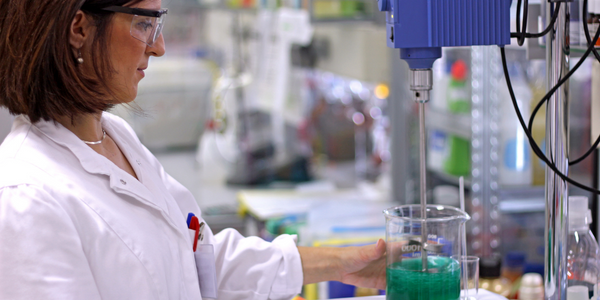下载PDF
IoT Implementation in Defense Research: A Case Study of TNO Prins Maurits Laboratory
适用功能
- 产品研发
用例
- 现场人员安全管理
挑战
TNO Prins Maurits 实验室(TNO-PML)是国防研究领域的著名机构,在爆炸安全、弹药效应、弹道防护和武器平台生存能力等领域提供科学和技术建议。该实验室将实验设施与数值分析能力相结合,以提供高质量的研究。然而,挑战在于将这些研究成果应用到现实场景中。他们的研究工具 AUTODYN 的主要应用包括终端弹道学、损伤生物力学、弹药和爆炸物的安全现场储存、炸弹攻击和爆炸对结构的影响、爆炸材料处理和地雷爆炸建模。面临的挑战是如何有效地利用这些应用程序,以提高防御行动的安全性和效率。
关于客户
TNO Prins Maurits 实验室 (TNO-PML) 是国防研究领域的领先机构,总部位于荷兰。 TNO-PML 凭借高质量研究的良好记录,提供各个领域的科学和技术建议,包括爆炸安全、弹药效应、弹道防护和武器平台的生存能力。该实验室将实验设施与数值分析能力相结合,提供全面实用的解决方案。 TNO-PML 的研究工具 AUTODYN 的主要应用包括终端弹道学、损伤生物力学、弹药和爆炸物的安全现场存储、炸弹攻击和爆炸对结构的影响、爆炸材料处理和地雷爆炸建模。
解决方案
为了应对这些挑战,TNO-PML 与 Century Dynamics 合作,积极参与与瓦斯爆炸和爆炸效应相关的研究。他们一直在使用 AUTODYN,这是一种多功能工具,可以模拟各种场景。这包括与聚能射孔弹、动能射弹和装甲相关的末端弹道学、伤害生物力学(例如冲击波对人体和钝性创伤的影响)以及炸弹袭击和爆炸对结构的影响。此外,AUTODYN还用于弹药和爆炸物的安全现场存储、爆炸材料处理和地雷爆炸建模。这种综合方法使 TNO-PML 能够以实际有效的方式应用其研究成果,从而提高国防行动的安全性和效率。
运营影响
相关案例.

Case Study
Wearables for Connected Workers
Together, Honeywell and Intel have developed a IoT proof of concept (PoC) for the Connected Worker. The Connected Worker can take many forms - factory laborer, mine worker, first responder, firefighters and more. For each environment and worker role, a different selection of sensors may be appropriate to provide the most meaningful IoT-fueled dataset to represent that individual worker asset. As with most IoT solutions, it is critical to avoid being overwhelmed by a steady stream of meaningless data. Rather, it is essential to send select actionable intelligence to the cloud for visualization and customized alert notifications. The downside is that data from individual wearable devices - if viewed independently - can potentially cause false alarms and contribute to inefficiencies in a manpower as a result. Fusing sensor technology with big data processing (hub/gateway), analytics - all in the cloud - is the key to improving local intelligence as well as remote visualization of actionable intelligence.

Case Study
Underground Mining Safety
The goal was to produce a safety system to monitor and support underground mining operations; existing systems were either too simple (i.e. phone line) or overly complex and expensive, inhibiting deployment, and providing little-to-no support in event of an accident. Given the dangerous nature of the mining work environment and the strict regulations placed on the industry, the solution would have to comply with Mine Safety and Health Administration (MSHA) regulations. Yet the product needed to allow for simple deployment to truly be a groundbreaking solution - increasing miner safety and changing daily operations for the better.

Case Study
Facility Management Solution in Construction Industry
In the construction of Crown Towers in Perth, hundreds of workers enter and exit the construction site each day, totalling into thousands by the completion of the project. All of these workers perform different tasks and come from different agencies, making it difficult for supervisors to track who does what, when, and where on such a large-scale site. An easy-to-use access, security and facility management solution was required.

Case Study
Industrial Workforce Mobility for Improved Safety & Operations
Huntsman Corporation, a global manufacturer and marketer of differentiated chemicals, undertook an aggressive program to eliminate injuries, product defects, and environmental releases at their Port Neches facility. Termed “Project Zero”, this program required a completely mobile solution to empower operations and maintenance personnel to capture defects, track work progress and make process and safety related decisions in real-time.

Case Study
Improving Factory Worker Posture
A 49 year old factory worker with long-standing low back pain was referred to a ViMove clinic for assessment and treatment. The worker’s low back pain had been managed and resolved with acupuncture in the past. The patient reported severe low back pain worse in the morning after prolonged rest. He also had trouble straightening up and experienced constant stiffness and pain.

Case Study
WEST TEXAS GAS TRUSTS WIN-911 ALARM NOTIFICATION SOFTWARE
It became clear that the SCADA system was not an infallible means ofmonitoring field stations; the systems would sometimes lose connection with the host computer. This caused delays in personnel response to alarms and increased the risk of severe warnings not being received before corrective actions could be implemented. As a precaution, the alarm points had to be visually monitored and staff would be required to call the appropriate personnel if an alarm came through. Regulations wereestablished for timely reporting. The management at West Texas Gas quickly determined that a secondary alarm support system needed to be installed. They were seeking something that would be able to monitor variable tags from the OPC server as well as monitor custom tags that were built into the existing SV32 SCADA system to observe and report flare volumes.





